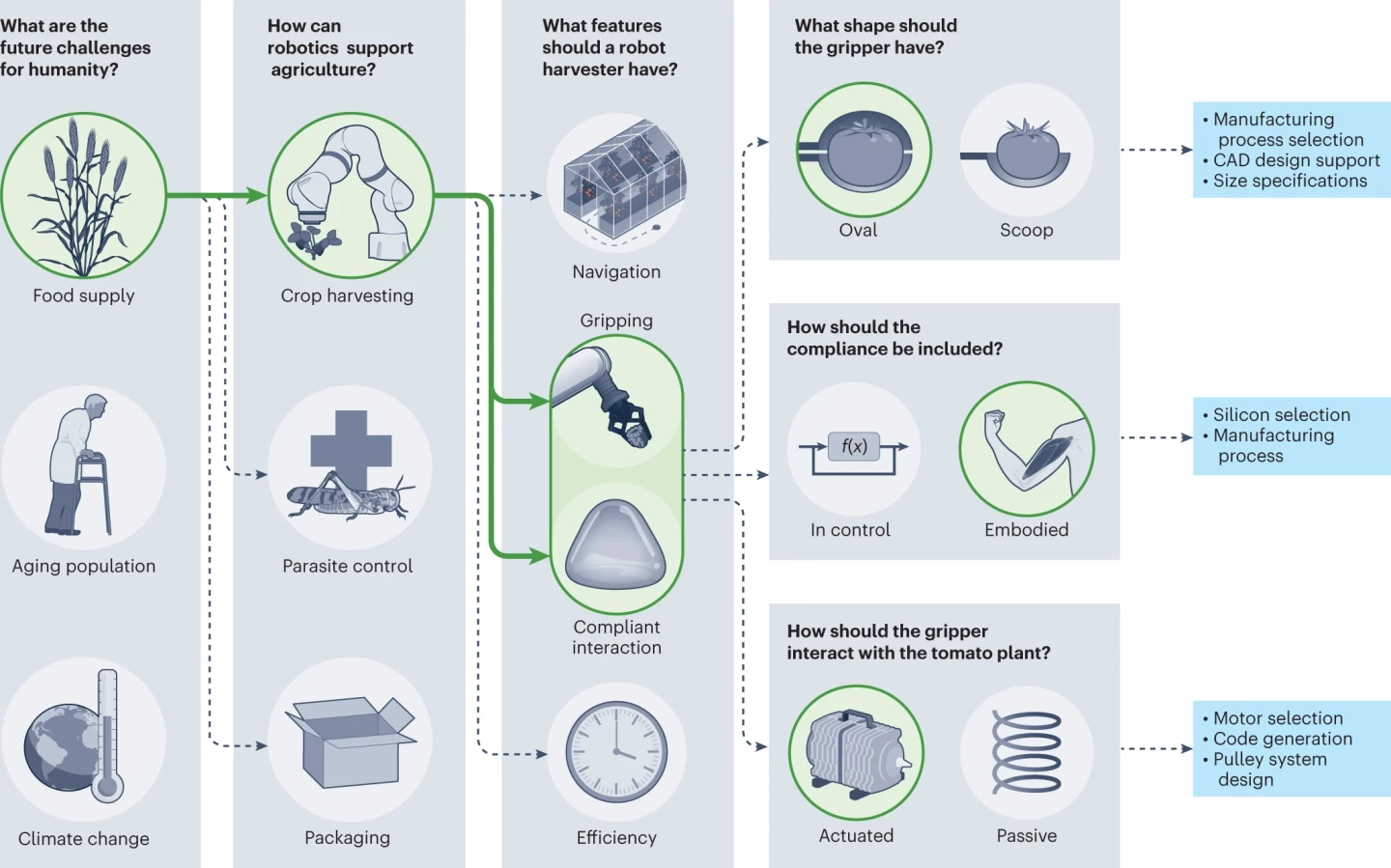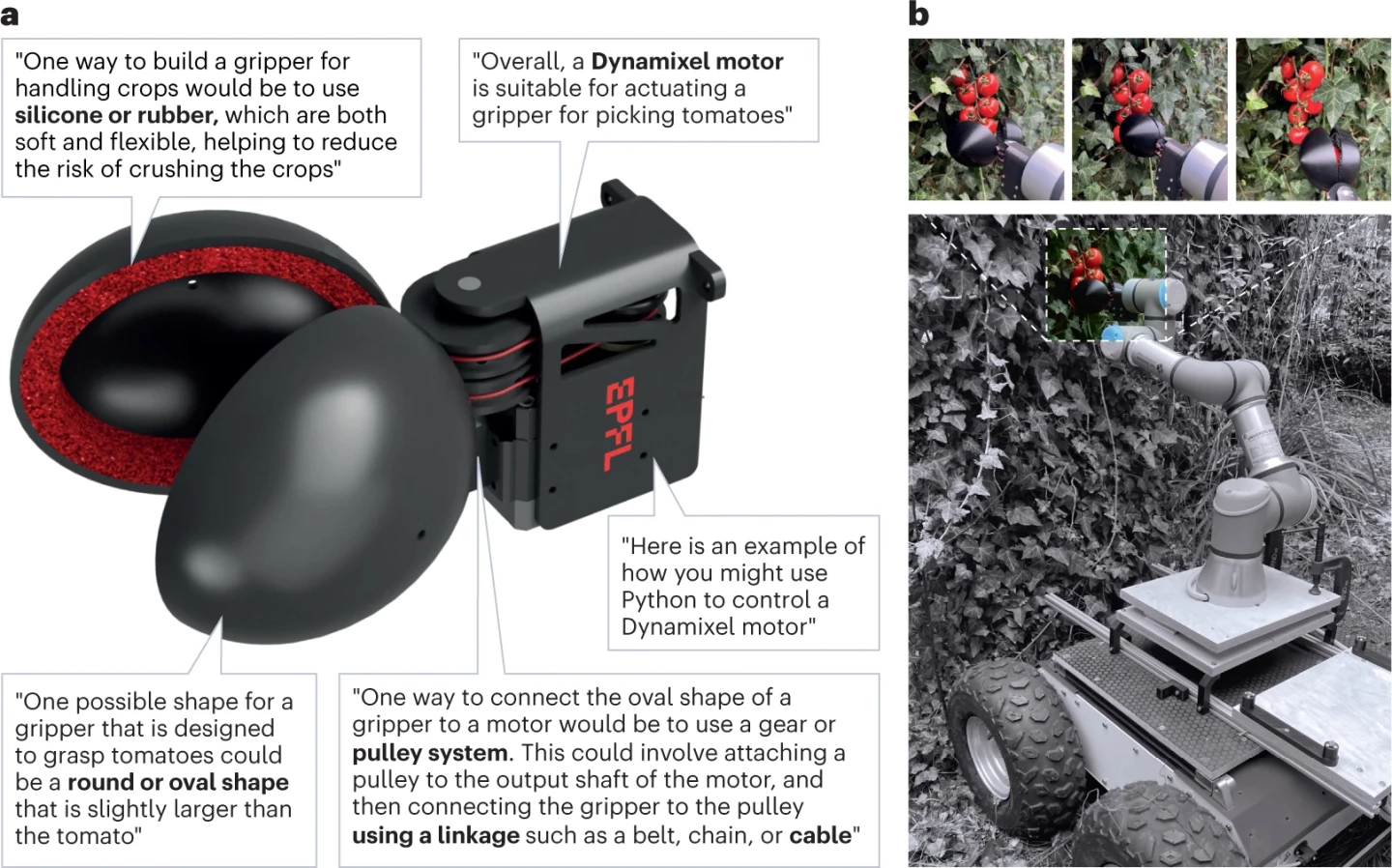Is there anything ChatGPT can’t do? Yes, of course, but the list appears to be getting smaller and smaller. Now, researchers have used the large language model to help them design and construct a tomato-picking robot.
Large language models (LLMs) can process and internalize huge amounts of text data, using this information to answer questions. OpenAI’s ChatGPT is one such LLM.
In a new case study, researchers from the Delft University of Technology in the Netherlands and the Swiss Federal Institute of Technology (EPFL) enlisted the help of ChatGPT-3 to design and construct a robot, which might seem strange considering that ChatGPT is a language model.
“Even though ChatGPT is a language model and its code generation is text-based, it provided significant insights and intuition for physical design, and showed great potential as a sounding board to stimulate human creativity,” said Josie Hughes, a co-author of the published case study about the experience.
First, the researchers asked the AI model, “What are the future challenges for humanity?” ChatGPT proposed three: food supply, an aging population and climate change. The researchers chose food supply as the most promising direction for robot design because it was outside their area of expertise.
Using the LLM’s access to global data sourced from academic publications, technical manuals, books, and media, the researchers asked the AI what features a robot harvester should have. ChatGPT came up with a motor-driven gripper for pulling ripe tomatoes from the vine.
Once this general design was decided on, the researchers could move on to design specifics, including what construction materials would be used and creating computer code that would control it. Currently, LLMs can’t generate entire computer-assisted design (CAD) models, evaluate code or automatically fabricate a robot, so this step required the researchers to adopt a ‘technician’ role where they assisted with these aspects, optimizing the code written by the LLM, finalizing the CAD and fabricating the robot.

“While computation has been largely used to assist engineers with technical implementation, for the first time, an AI system can ideate new systems, thus automating high-level cognitive tasks,” said Francesco Stella, lead author of the case study. “This could involve a shift of human roles to more technical ones.”
Based on the technical suggestions provided by ChatGPT-3, the researchers built their robot gripper and tested it in the real world, using it to pick tomatoes, which it did successfully.
The researchers say that their case study demonstrates the potential for transforming the design process through collaboration between humans and LLMs, but they’re aware that it opens the door to varying degrees of collaboration.
At one extreme, they say, AI would act as an ‘inventor,’ providing the entirety of the robot design input with humans blindly applying it. An alternative would be to use an AI’s wide-ranging knowledge to supplement human expertise. A third approach would be to retain the human as an inventor and use AI to refine the design process through troubleshooting, debugging, and handling tedious or time-consuming processes.
The researchers raise ethical and commonsense risks that may result from a human-AI collaboration. They point to issues of bias, plagiarism, and intellectual property (IP) rights as areas of concern and question whether an LLM-generated design can be considered ‘novel’ given that it uses existing knowledge.
“In our study, ChatGPT identified tomatoes as the crop ‘most worth’ pursuing for a robotic harvester," Hughes said. "However, this may be biased towards crops that are more covered in literature, as opposed to those where there is truly a real need. When decisions are made outside the scope of knowledge of the engineer, this can lead to significant ethical, engineering, or factual errors.”
Despite these concerns, the researchers believe there is great potential in human-AI collaboration if it’s well managed.
“The robotics community must identify how to leverage these powerful tools to accelerate the advancement of robots in an ethical, sustainable and socially empowering way,” the researchers said. “Looking forward, we strongly believe that LLMs will open up many exciting possibilities and that, if opportunely managed, they will be a force for good.”
The case study was published in the journal Nature Machine Intelligence.
Source: EPFL








